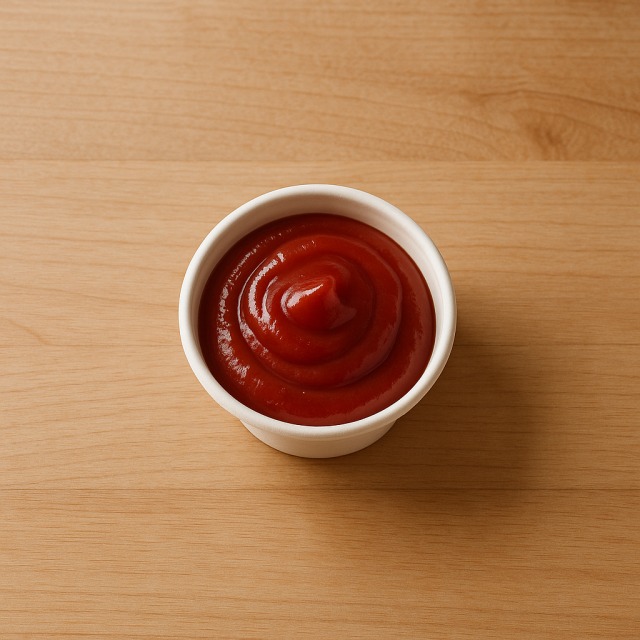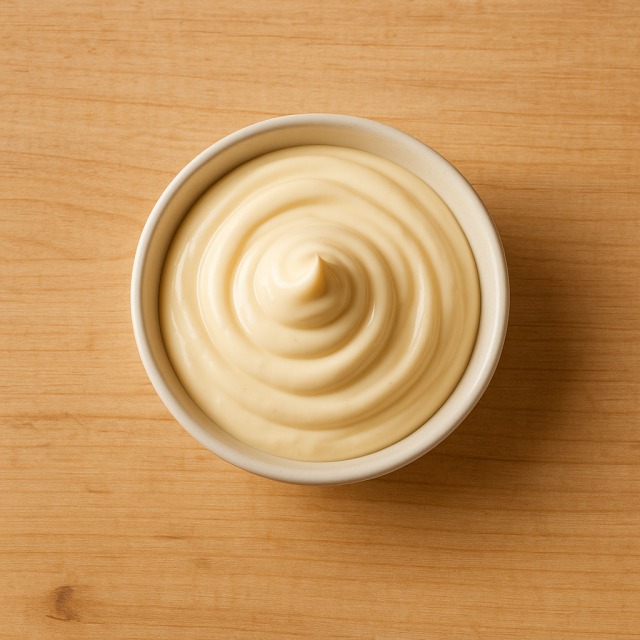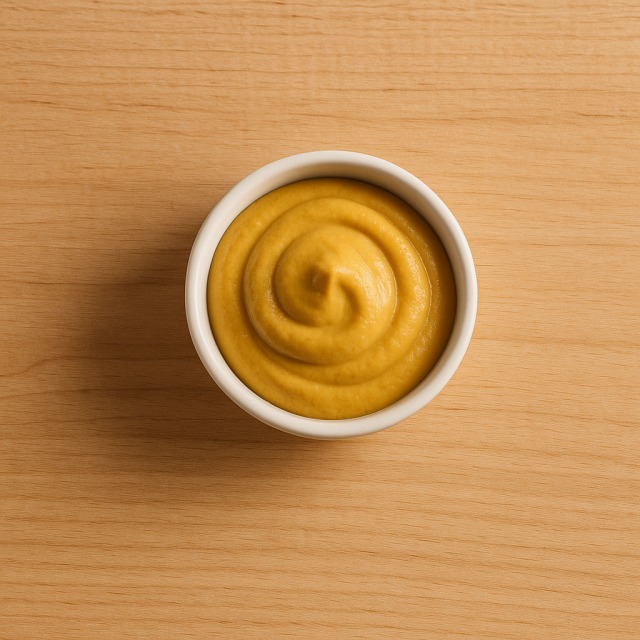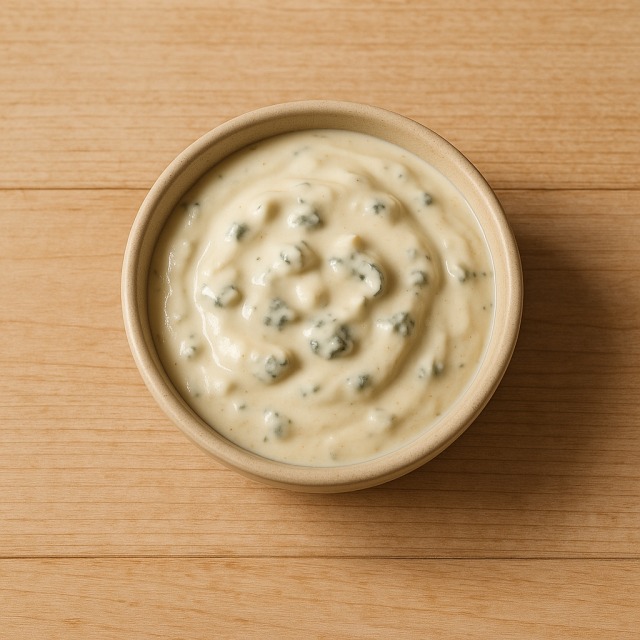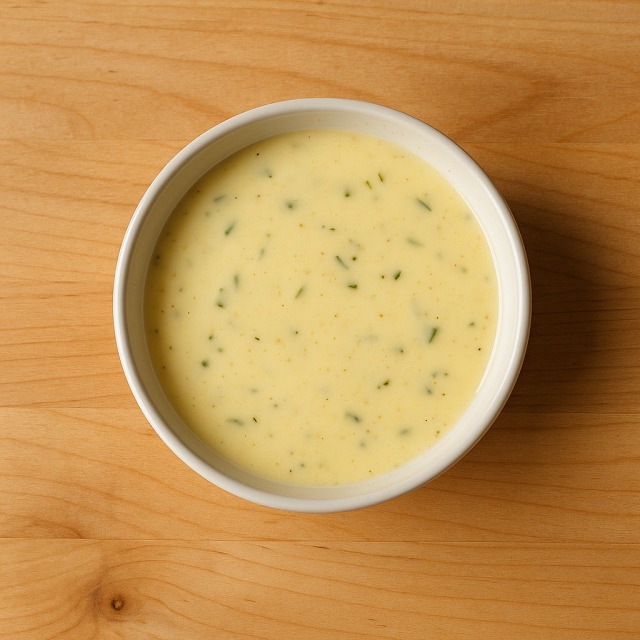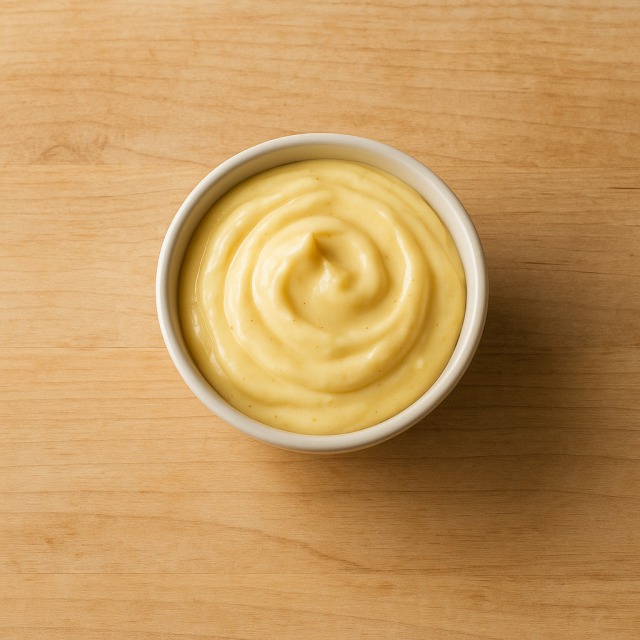Calorie Chart / Seasoning & Sauces / Mayonnaise - Light
How Many Calories Are in Light mayonnaise?
Calculation of the nutritional value & Recommended Dietary Intake of light mayonnaise
For g and a calorie requirement of kcal
| Calories 59 kcal | Proteins 0.2 g | Lipids 5.9 g | Carbohydrates 1.7 g |
| 3% | 0% | 9% | 1% |
Health benefits of light mayonnaise
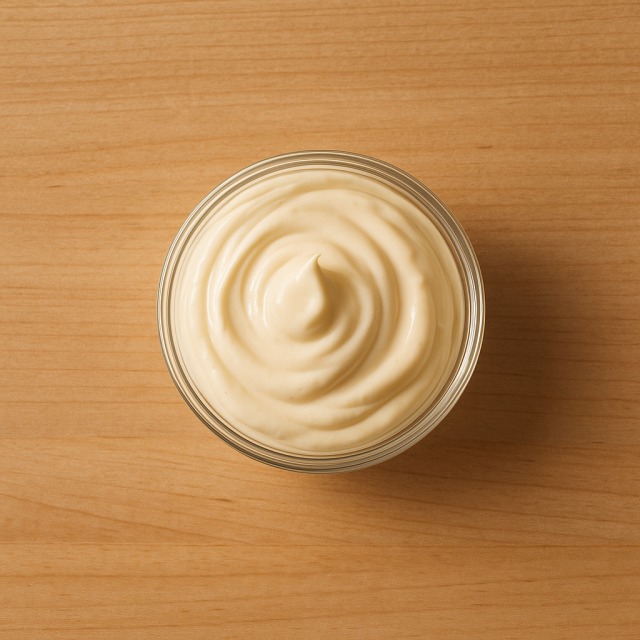
Light mayonnaise - 100g
Calories 395 kcal
Proteins 1 g
Lipids 39 g
Carbohydrates 11 g
Light mayonnaise is an emulsified sauce developed to deliver the familiar creamy taste of classic mayonnaise while providing fewer calories than the original recipe. With around half the calories of a traditional jar, it is generally considered a moderate- to high-calorie condiment: you still have to keep an eye on portions if you are counting calories, but it offers a clear advantage for anyone trying to save calories at each meal.
The main oil used (often rapeseed or sunflower) supplies vitamin E, a natural antioxidant that helps protect cells from oxidative stress. Vitamin K, indispensable for normal blood clotting, is also present. Egg yolk, an ingredient of most commercial light mayonnaises, contributes choline, which plays a role in liver function and nerve signaling. When the producer chooses rapeseed oil, a modest share of omega-3 (alpha-linolenic acid) is included—useful for heart health, although the benefit remains "supposed" until the exact fatty-acid profile is stated. Thanks to its reduced fat content, light mayonnaise lets athletes or weight-watchers enjoy classic sandwiches or salads while controlling calories. Mentioning calories several times underscores its main selling point: fewer calories for almost the same flavor.
Historically, mayonnaise appeared in 18th-century France and Spain; industrial versions became common in the 1930s. Light recipes followed in the 1980s, paralleling growing public interest in calories and fat reduction. In other words, the very existence of light mayonnaise is closely linked to society's desire to monitor calories without sacrificing culinary pleasure.
Tips for incorporating light mayonnaise into a balanced diet
Because every gram of light mayonnaise still delivers calories, moderation is key. Replace part of the sauce in a tuna salad by mixing one tablespoon of light mayonnaise with two of plain yogurt; the flavor remains creamy while calories plummet. The mixture pairs well with drained tuna in water, diced cucumber, and sweet carrot for a quick lunch box.
For a high-protein post-workout wrap, spread a thin layer of light mayonnaise on a whole-wheat tortilla, add grilled chicken breast, shredded lettuce, and slices of tomato. You obtain texture and taste while limiting calories compared with full-fat mayonnaise.
If you crave a dip for crudités, whisk light mayonnaise with a dash of mustard, chopped herbs, and lemon juice. The acidity boosts flavor so you can use less sauce and cut calories again. Remember that vegetables such as broccoli or bell pepper are naturally low in calories, making the whole snack very diet-friendly.
Finally, when preparing a homemade coleslaw, swap half the usual dressing for light mayonnaise and half for fat-free fromage blanc 0%. The crunch of cabbage and carrots balances the creaminess while holding total calories in check. Using these small strategies repeatedly keeps daily calories under control without feeling deprived.
Frequently Asked Questions
- How many calories are in light mayonnaise?
- Light mayonnaise provides 395 kcal per 100 g.
- Is light mayonnaise really lower in calories than regular mayonnaise?
- Yes. Classic mayonnaise contains roughly 700 kcal per 100 g, almost double the calories of the light version. Switching sauces is therefore an efficient way to shave calories from a sandwich, wrap, or salad.
- Can I use light mayonnaise in heated dishes?
- Light mayonnaise can be gently warmed in recipes such as baked fish topped with herbs and a thin mayonnaise crust. However, overheating can cause separation; keep the temperature moderate to preserve texture and avoid wasting calories on a broken sauce.
- Does light mayonnaise fit into a ketogenic diet?
- With 39 g of lipids, 11 g of carbohydrates, and only 1 g of proteins per 100 g, light mayonnaise is still predominantly fat, but its slightly higher carb content compared with classic mayonnaise means very strict keto followers should count their daily calories and carbohydrates carefully.
- What is the best way to store light mayonnaise?
- Keep the unopened jar in a cool, dry cupboard. After opening, refrigerate it at 4 °C and consume within four weeks. Proper storage avoids spoilage and prevents wasting both food and the calories you planned into your diet.
- Can light mayonnaise help with weight loss?
- Used in reasonable portions, light mayonnaise can reduce daily calories compared with the regular version, helping to create the calorie deficit necessary for weight loss. Pair it with lean proteins such as turkey cutlet and plenty of vegetables to maximize volume without piling on calories.
Similar foods
Information provided by Calorie Menu may contain inaccuracies or errors. It cannot, under any circumstances, substitute medical advice or medication.
